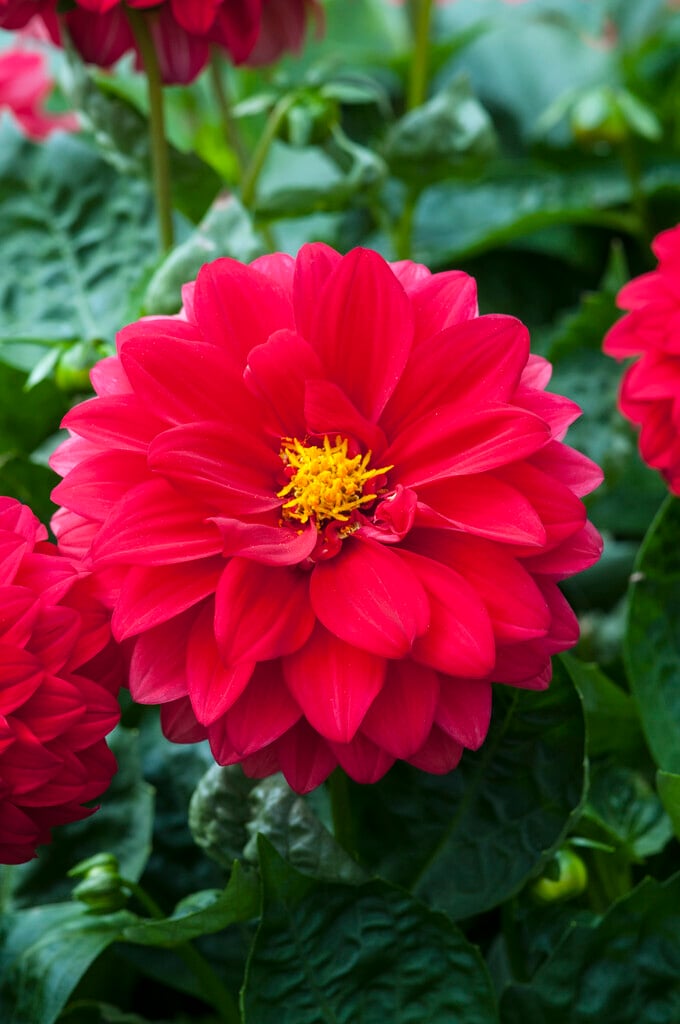Dahlia Dalina Maxi Topia ('Da12'PBR) (Dalina Maxi Series) (Misc)
dahlia [Dalina Maxi Topia]
A compact, deciduous tuberous-rooted perennial, to about 45cm, with dark stems and green foliage. Vibrant double red flowers are produced from mid-summer to the first frosts

Buy this plant
Size
Ultimate height
0.1–0.5 metresTime to ultimate height
1–2 yearsUltimate spread
0.1–0.5 metresGrowing conditions
Moisture
Moist but well–drainedpH
Acid, Alkaline, NeutralColour & scent
| Stem | Flower | Foliage | Fruit | |
| Spring | Green | |||
|---|---|---|---|---|
| Summer | Red | Green | ||
| Autumn | Red | Green | ||
| Winter |
Position
- Full sun
Aspect
South–facing or West–facing
Exposure
Sheltered Hardiness
H3Botanical details
- Family
- Asteraceae
- Native to GB / Ireland
- No
- Foliage
- Deciduous
- Habit
- Clump forming
- Genus
Dahlia are tuberous rooted perennials with pinnately divided leaves and showy flowerheads, double in many cultivars, in summer and autumn
- Name status
Trade
- Horticultural Group
- Miscellaneous dahlias encompass those cultivars that do not fit in the more formal classification groups
How to grow
Cultivation
Grow in full sun, in fertile, humus-rich, well-drained soil enriched with organic matter and general-purpose fertiliser. Pinch out growing tips to encourage bushy plants. Water freely in dry periods. Lift and store tubers in autumn to replant, or use as a source of cuttings, in spring. See dahlia cultivation
Propagation
Propagate by basal softwood cuttings taken in spring from shoots from stored tubers, or divide clumps of tubers ensuring that each division has a viable bud
Suggested planting locations and garden types
- City and courtyard gardens
- Cottage and informal garden
- Patio and container plants
- Bedding
- Cut flowers
- Flower borders and beds
Pruning
Deadhead to prolong flowering. Cut back to near ground level in autumn, once frost has damaged foliage, before lifting and storing for the winter
Pests
May be susceptible to aphids, capsid bugs, caterpillars, earwigs nibbling flowers, glasshouse red spider mite and slugs
Diseases
May be susceptible to powdery mildews in dry conditions, fungal rots including grey mould in wet conditions and in storage, and a virus that causes stunting, leaf markings and distortion
Get involved
The Royal Horticultural Society is the UK’s leading gardening charity. We aim to enrich everyone’s life through plants, and make the UK a greener and more beautiful place.